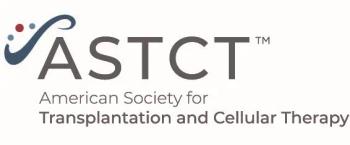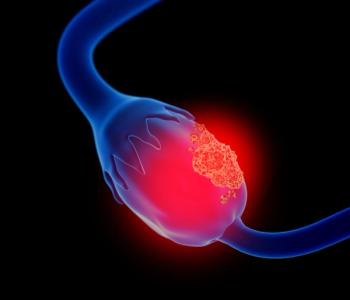![According to John Henson, MD, “What we need are better treatments to control the [brain] tumor once it’s detected.”](https://cdn.sanity.io/images/0vv8moc6/cancernetwork/e0d29c38bb732429ae370e4ef7d1829a10c96446-2992x1684.png?w=350&fit=crop&auto=format)
Nogapendekin Alfa Inbakicept Elicits Promising Efficacy in Bladder Carcinoma
Nogapendekin alfa inbakicept plus BCG led to a CR rate of 71%, with 60% of responders maintaining their response for at least 12 months, in patients with bladder carcinoma in situ.
Nogapendekin alfa inbakicept (NAI; Anktiva) elicited sustained complete response (CR) rates, progression-free survival (PFS), and high rates of cystectomy avoidance in patients with high-risk Bacillus Calmette-Guérin (BCG)-unresponsive bladder carcinoma in situ (CIS), with or without papillary disease, according to a 36-month analysis from cohorts A and B of the phase 2/3 QUILT-3.032 trial (NCT03022825) presented at the
In cohort A (n = 100), patients treated with NAI plus BCG achieved a CR rate of 71% (95% CI, 61.1%-79.6%), with a duration of response (DOR) extending beyond 53 months as of the July 15, 2024, data cutoff. Further, 60% of responders maintained their response for at least 12 months. At 36 months, the cystectomy-free rate stood at 84%, with a disease-specific survival rate of 99%.
“The advantage of this long-term follow up is the duration of response for some patients at 53 months and beyond,” Sam S. Chang, MD, MBA, the Patricia and Rodes Hart Professor of Urologic Surgery, professor, Department of Surgery, chief surgical officer, Vanderbilt Ingram Cancer Center, and chief, Division of Urologic Oncology, Vanderbilt University Medical Center, Nashville, Tennessee, said at the AUA meeting. “The cystectomy-free rate focuses on the impact on patients’ well-being; these are the only 3-year data [that demonstrate] 84% avoidance of cystectomy,” Chang continued.
Chang noted that the FDA approval for NAI was based on the initial analysis of QUILT-3.032.2 In the current analysis, the FDA-labeled population showed a CR rate of 51% with a duration of 45 months or longer. “Although other data have shown some effectiveness, none have shown this continued response and I think that’s important,” Chang said. “Additionally, the overall 12- and 24-month complete response rates seem to be best in class.”
Turning to cohort B (n = 80), which enrolled patients with non–muscle-invasive bladder cancer (NMIBC) without CIS who were treated with NAI and BCG, investigators reported a disease-free survival (DFS) rate at 12 months of 58% (95% CI, 46.6%-68.2%) and a 24-month DFS rate of 52% (95% CI, 40.3%-62.7%). The median DFS was 25.3 months (95% CI, 9.8-40.1).
The cystectomy-free rates were 92% at 12 months and 82% at 36 months. They noted this cystectomy avoidance rate of 82% at 36 months was the highest percentage of bladder sparing and the longest duration available to date in BCG unresponsive NMIBC papillary disease without CIS.
Chang then reviewed the efficacy in patients with NMIBC (CIS with or without papillary disease; FDA cohort) and those with papillary disease alone without CIS (supplemental BLA cohort awaiting approval). Overall, more than 80% of patients avoided cystectomy, with disease-specific survival exceeding 96% at 36 months.
Specifically, in the cohort of patients with BCG-unresponsive NMIBC CIS with or without papillary disease, the cystectomy-free rate at 12 months was 96% and at 36 months it was 84%. Disease-specific survival at 12 months was 100% and at 36 months it was 99%.
In the cohort of patients with BCG-unresponsive NMIBC with papillary disease alone, the cystectomy-free rate at 12 months was 92% and at 36 months it was 82%. Disease-specific survival at 12 months was 99% and at 36 months it was 96%.
Study Background
In the previous analysis, investigators had reported an overall CR rate of 71% (95% CI, 59.6%-80.3%) and a median DOR of 23.9 months (range, 3.2-37.5) based on a January 15, 2022, cutoff.3
Patients were enrolled in 3 cohorts. Patients in cohorts A and C had histologically confirmed BCG-unresponsive CIS with or without Ta/T1 papillary disease. Cohort B enrolled patients with histologically confirmed BCG-unresponsive high-grade Ta/T1 papillary NMIBC.3
The primary objective was the incidence of CR at the 3- or 6-month assessment based on cytology and cystoscopy. The secondary objective was PFS, OS, and cystectomy avoidance.3
Safety
Intravesical NAI and BCG was well tolerated in cohorts A and B with 3% of patients reporting grade 3 treatment-related adverse events (TRAEs) and no grade 4/5 TRAEs. Most TRAEs were grade 1 or 2 and were related to intravesical instillation consistent with BCG alone.
“This first-in-class, immune-stimulating agent maintains a safety profile that is quite similar to what we’ve seen previously,” Chang said.
“These updated results demonstrate a favorable risk-benefit ratio in this population. “Both cohorts [reviewed today] had significant cystectomy-avoidance rates as well as durable disease specific survival rates,” Chang concluded.
Reference
- Chang S, Chamie K, Kramolowsky E, et al. An updated on QUILT-3.032: complete responses to N-803 plus BCG therapy in BCG-unresponsive bladder carcinoma in situ (CIS) with or without papillary disease. Presented at: American Urological Association Annual Meeting; April 26-29, 2025; Las Vegas, NV. Abstract PD12-12.
- FDA Approves nogapendekin alfa inbakicept-pmln For BCG-unresponsive non-muscle invasive bladder cancer. FDA release. Accessed April 27, 2025. https://tinyurl.com/4xzautkw
- Chamie K, Chang SS, Kramolowsky E, et al. IL-15 superagonist NAI in BCG-unresponsive non-muscle-invasive bladder cancer. NEJM Evid. 2023;2(1):EVIDoa2200167. doi:10.1056/EVIDoa2200167
Newsletter
Stay up to date on recent advances in the multidisciplinary approach to cancer.





















































































